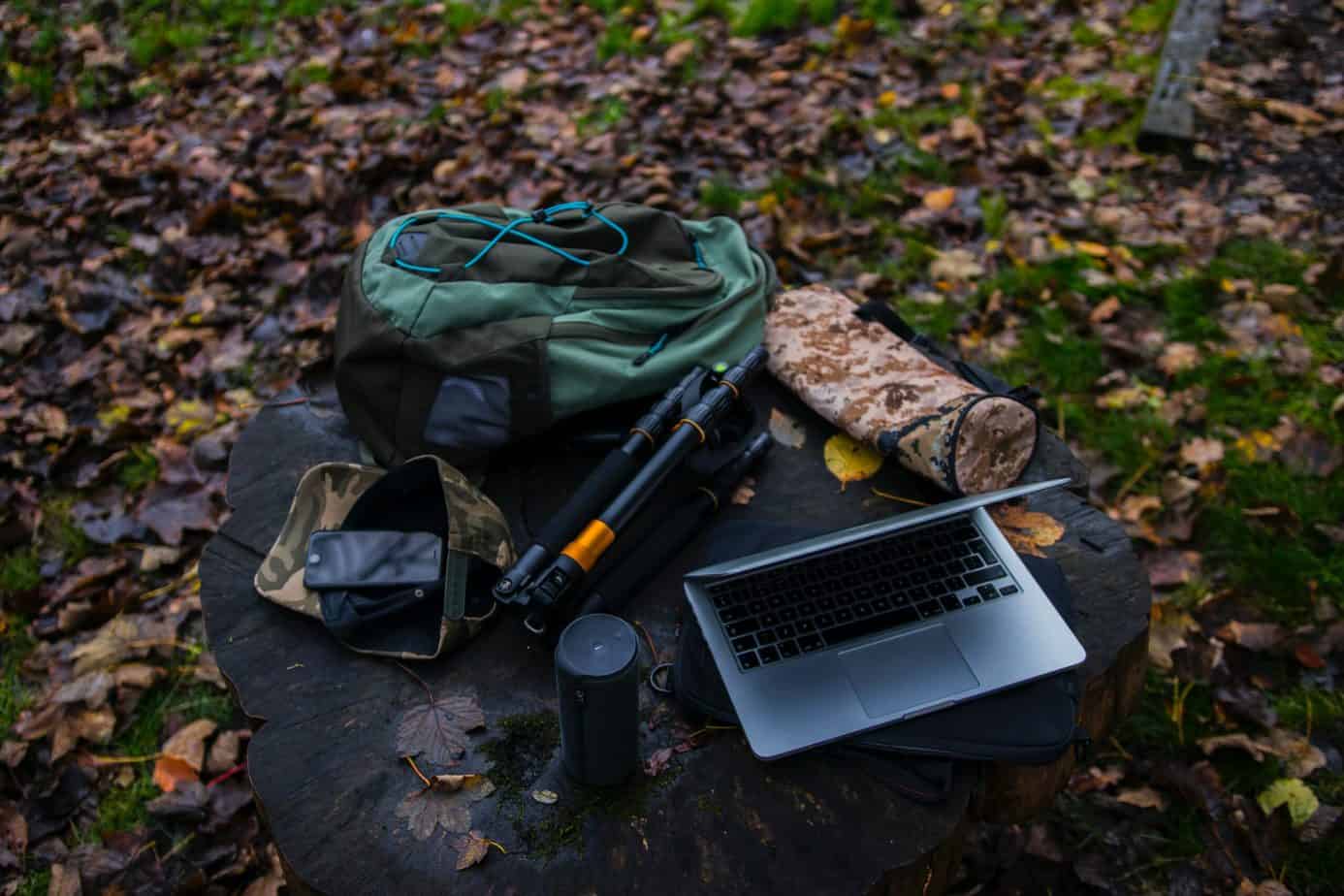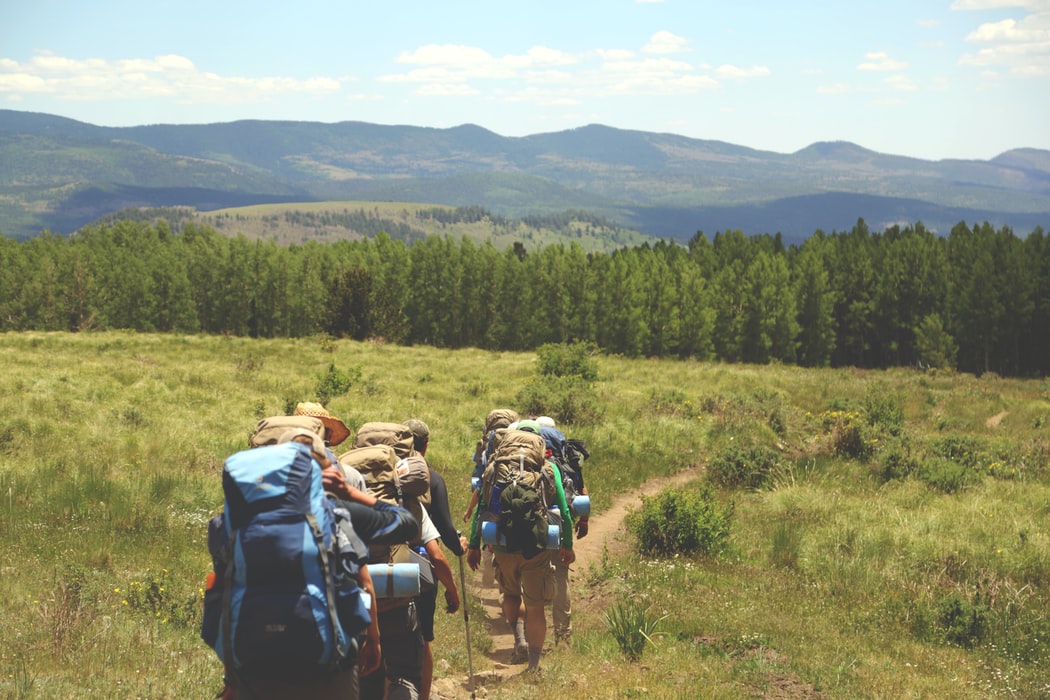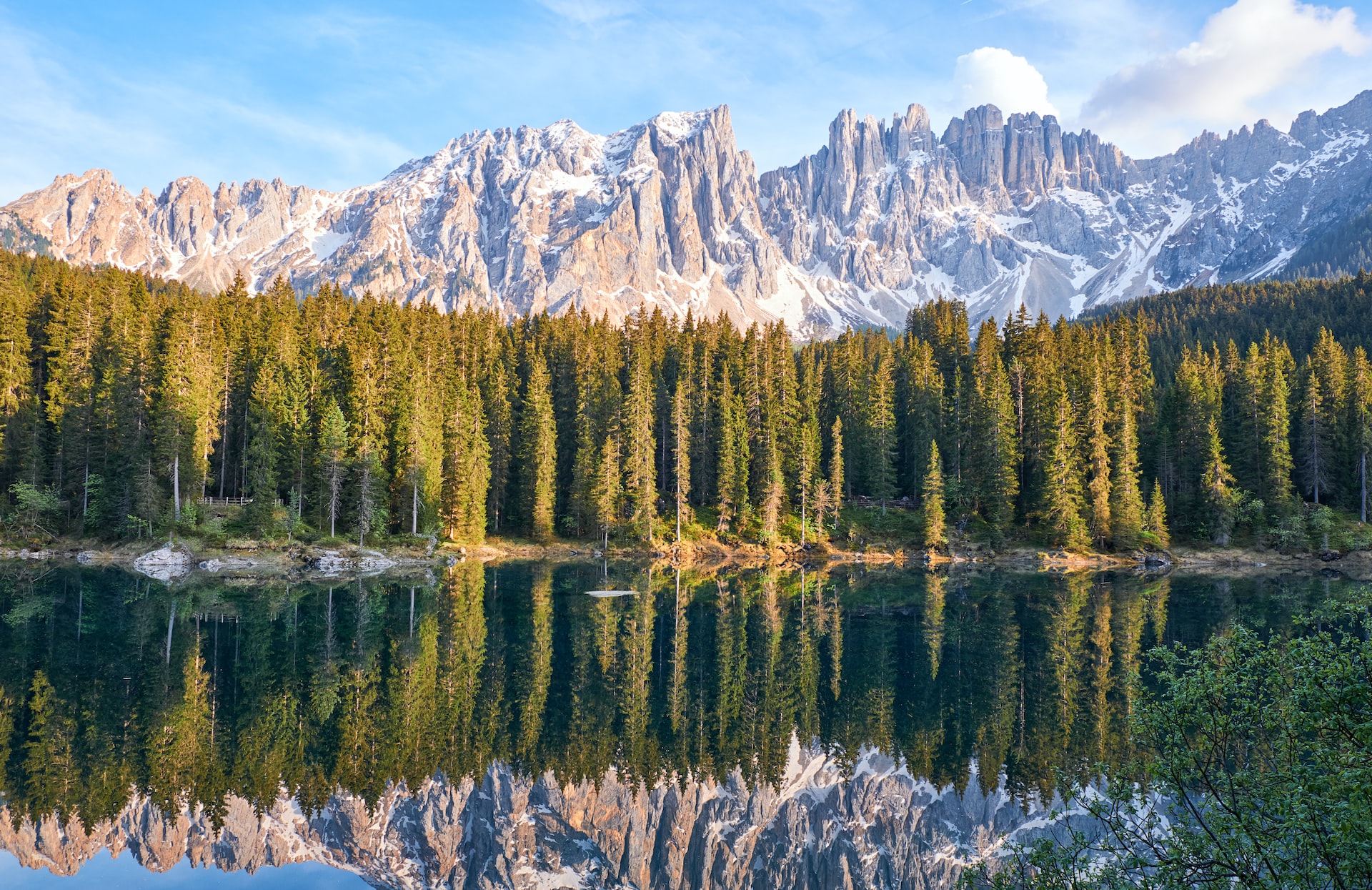SEO is important for tour operators in the adventure travel industry because it’s another way to get more visitors to your site and, ultimately, more clients. Adventure travel starts with a Google search. Our clients search for outdoor activities they want to do when visiting a place.
Table of Contents
Why SEO Is Important For Outdoor Guiding Businesses
How Tourism SEO Works – The Basics
Quick Tourism SEO Tips For Guiding Businesses
With a solid (and long-term) SEO strategy for your guiding website, you can build your site’s authority and end up higher in the search results when a potential client is searching for their next adventure.
What is Tourism SEO?
SEO stands for “Search Engine Optimization.” We use “Tourism” because your SEO strategy will be different from a tech company’s SEO.
You’ve probably heard of “SEO keywords,” which is just one aspect of search engine optimization. There are a lot of pieces to SEO, but it means using strategies and tactics to generate higher quality (and more) traffic to your website.
There are two kinds of search: paid and organic. Paid search is paying for ads using keywords your targeted audience uses when they’re searching for a mountain guide. Organic search is anything that shows up in a Google search that isn’t paid for. In this article, we’re going to cover organic search.
Important aspects of organic search that we’ll go over are keywords, search engine results pages (SERPs), off-page vs. on-page SEO, and how to incorporate all of this on your outdoor guiding site.
Why SEO Is Important For Outdoor Guiding Businesses
Tourism SEO helps your business get discovered when people are searching for guiding services. Before we had the internet, we had to rely on word-of-mouth to grow brand awareness. That took a lot of time for news about you to spread. Now, we can actually pay to show up first in Google results. All you need is money for that.
The problem with paid search is that not all outdoor guiding businesses have the cash to out-spend their competitors. Others would rather use that money toward new gear or paying their employees more.
Organic Search Is Still A Main Source Of Traffic
Pull up your Google Analytics and see how many visitors come from organic search. Likely, it’s most of your traffic. And if you’ve read our previous blogs about digital marketing and buyer’s journey, you’ll know that organic search can be used through the entire marketing funnel.
From interest to consideration to retention, organic search results can show up for your clients or prospects no matter their stage. Paid search is mostly used for the conversion stage.
Organic search is also a long-term strategy. Paid search may drive traffic, but it only drives traffic so long as you’re paying for it. Organic drives traffic as long as your content exists.
SEO Builds Trust And Credibility
Having a long-term tourism SEO strategy will help you build trust and credibility with your potential clients. Having a website with credible backlinks, on-page optimization, good user experience and interface, signals to Google’s crawlers that your site is worth showing higher in SERPs.
SEO Increases Your Website Traffic
Visitors to your webpage will also trust your guiding site more and stay longer when you’ve optimized pages for what customers are searching for. Answering your potential customers’ questions gives them a better experience. The more visitors you get and the longer they stay on your site, the more Google will show you in its results. And the process continues.
How Tourism SEO Works – The Basics
Search engine optimization works in a number of ways. There is technical optimization, off-page SEO, and on-page SEO. Most of us think of just using keywords to optimize our sites, but that’s only one component.
Technical Optimization
An often overlooked aspect of tourism SEO is technical optimization, which is everything outside of content optimization and link building. Mainly, technical optimization is making sure search engines can crawl your website effectively.
This means:
- Reducing site errors
- Submitting an XML sitemap to Google
- Removing duplicate content based on the XML Sitemap
- Checking that Google indexed your site and pages
- Reducing loading page time
- Making your site mobile-friendly
- Getting an SSL Certificate (prove your site is safe)
These are the biggest factors that can prevent search engines from crawling your website and therefore, not displaying your site in the SERPs. And if you want clients to discover your guiding site, you need to show up in the search results.
Off-Page Optimization
The second component of tourism SEO is off-page optimization, and this means backlinks. To increase your domain authority (the likelihood of your site ranking on SERPs), you need backlinks from high-ranking websites. Or, at least, websites that rank higher than you on Google results.
Research
If you don’t already have a list of authoritative websites you’d like a backlink from, then you’ll need to do some research.
Find trustworthy websites (and industry directories) that will link to your high-quality blog posts or your outdoor website’s home page. This requires a bit of time and effort to find blogs and websites within your niche and reach out to them. You also need to be mindful of how linking to your site will benefit them.
The more quality backlinks you have, the more credibility you give your site. Google reads this and will eventually start showing your linked page higher in SERPs.
On-Page Optimization
On-page SEO is everything on your website that can be optimized to increase traffic to your site and provide a great user experience. The main components are title tags, URLs, meta descriptions, headings, and body copy.
Title Tags
This is the title of your page, article, or blog post. It’s also called H1. The biggest things to remember with title tags is:
- Keep it less than 60 characters long
- Include your SEO keyword(s)
- Make it click-worthy
URL
The URL is the link to a specific page. For URLs, make sure to:
- Include your SEO keyword
- Keep it short
Meta Description
The meta description is the little blurb you see in the search engine results underneath the title. Key points to remember for meta descriptions are:
- The max characters displayed for mobile is 115 characters.
- The max for desktop is 156 characters.
- Include SEO keywords or closely related keywords.
- Write an attention-grabbing blurb for more click-throughs.
Headings And Body Copy
Headings split up your content and make it easier for a reader to skim through your page. Body copy is what we’re writing right here. Everything but the headings. When writing headings and body copy, remember:
- You want a healthy amount of your target keywords.
- Avoid overstuffing keywords because Google will penalize you for this.
- If you underutilize keywords, go back and see if there are appropriate places to add your keyword.
- Write how you’d normally talk about the topic. This makes it easier to read and more engaging.
SEO Keyword Research
Keyword research is one of the most important aspects of search engine optimization. This is how people find your site outside of backlinks.
Start by making a list of words you think people are using to search for your services. Also, consider how your current guests talk about your business. Use those phrases and words because they’re likely the same ones others are using to find businesses that offer your specific services.
To find more keywords, paste the ones you have in Google. Google usually displays related searches at the bottom of the page.
You’ll also notice there are long-tail and short-tail keywords. Long-tail keywords are phrases with three or more words. For example, “mountain guiding in Colorado.” While long-tail keywords take more research to find, they have higher conversion rates because they’re more focused. They also give you a better chance of showing up higher in SERPs.
On the other hand, short-tail keywords are easier to find but harder to convert. For example, “mountaineering.” It’s hard to determine the intent behind this keyword because there isn’t any context. Google can infer, but why leave it to chance? Using short-tail keywords also has bigger competition, you’re less likely to show up at the top of search results.
Use Google’s Keyword Planner for help. It’s typically used for Google Ads but you can use this free tool without having to create an ad through Google. It helps you discover new keywords based on what you entered. Plus, you can see the average monthly searches (find keywords with high-volume searches), you can see bid estimates, and how competitive a keyword is.
Quick Tourism SEO Tips For Guiding Businesses
Technical SEO
Mobile-First Indexing
Since most consumers use their phones when they search, Google crawls and indexes pages that are mobile-friendly first. We’ve also seen this for travelers. A lot of travelers will search for tours and activities in their location from their phones.
Review Technical SEO Elements
Like we mentioned before, reduce or eliminate any site errors, remove duplicate content on your site, reduce the loading page time (less than 3 seconds), keep your SSL certificate up-to-date, and check that Google indexed your site.
Off-Page SEO
Share Your Content To Get It Shared
Create high-quality content on your website like blogs, infographics, industry articles, tutorials, how-to guides, videos, podcasts, etc. Then share this content on your social platforms, in forums, and in your email newsletters.
This brings customers to your site. And if it’s a great piece of content, they’ll share it. Then more people come to your site. You grow your Domain Authority in Google and then you show up in the SERPs for more keywords. It’s a cycle. Create link-worthy content.
Get Backlinks
Ask industry partners, complementary industry brands, and companies you already do business with to link to your content (as long as it provides them benefits too).
- Even more important is getting links from local companies.
- Get links from authoritative websites to generate higher ROI on link building.
- Submit to local business directories.
- If you have any certifications, submit your site to their directory.
- Leave reviews for vendors/partners and ask if you can get a link back to your website within the review.
- Offer or ask for interviews and guest columns in local newspapers or magazines.
- Get a backlink to any organization that you’ve donated money or time to or hosted.
Google My Business and Reviews
According to Moz, this is the number one ranking factor for Google. Set up and optimize your Google My Business listing and check that you’re showing up properly on Google Maps. If you already have an account, fill it out entirely. As you complete your profile, select as many categories that are relevant to your business to optimize search results.
If you don’t already have reviews on your Google My Business account, implement a review acquisition plan. Moz says marketers believe reviews impact Google’s local rankings. It also develops trust and shapes your reputation as an outdoor guiding company.
The significant thing about this is that you can control reviews. You can ask your clients for them and you can respond to comments. This is something you can control, unlike proximity searches where Google shows businesses in proximity to the searcher’s location.
On-Page SEO
Optimized Content
Write click-worthy content, titles, and meta descriptions using the SEO keywords you found in your research.
Include long-tail keywords or synonyms in the title tag, meta description, URL, headlines, and body copy.
Internally link to other pages on your site. Using internal links on a blog will keep customers on your site longer. They can click from that anchor text to the next page. When they’re on your site longer, this signals to Google your site is relevant and helpful.
Use Google Analytics to keep track of your website performance. This way, you can see if your efforts are paying off or if you need to change course.
Key Takeaways
- SEO increases the quality and quantity of traffic to your website.
- SEO helps your business get discovered when people are searching for what you offer.
- Having a long-term SEO strategy will help you build trust and credibility with potential customers.
- Consider all three parts of SEO: technical optimization, off-page SEO, and on-page SEO.
- Keyword research is one of the most important aspects of search engine optimization. This is how people find your site outside of backlinks.
Further Reading
Why The Stages Of The Buyer’s Journey Matter For Adventure Tourism
Learn how to use the stages of the buyer’s journey in adventure tourism to sell more experiences through digital marketing.
Intro To Digital Marketing For Professional Adventure Guiding Services
Implementing a digital marketing strategy as a professional adventure guiding service will help you retain and gain new clients.
Why Iframes Are Bad For Your Outdoor Guiding Website’s SEO
If you’re using one of the more popular booking websites, then you’ve likely installed an iFrame and it’s affecting your SEO.
Outdoor Guide How To: Diversify Revenue and Adapt in COVID
Here’s how to diversify revenue and adapt during the COVID-19 area to set your outdoor guiding business apart and ahead from the competition.
This post is part of our Digital Marketing Series:
Intro To Digital Marketing For Professional Adventure Guiding Services
Why The Stages Of The Buyer’s Journey Matter For Adventure Tourism
An Introduction to Tourism SEO For Outdoor Guides
Is Paid Search Worth It For Adventure Tour Guides?
Is Display Advertising Useful For Your Adventure Guiding Company?
4 Advantages Of Content Marketing For Adventure Guides
Can Social Media Marketing Help Grow Your Adventure Guiding Business?
Or download our free Digital Marketing Ebook created specifically for outdoor guides.








